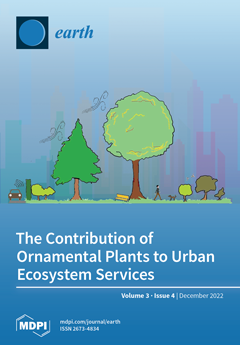We hypothesized that neotropical Myrtaceae could be organized into groups that are naturally less or non-responsive to NO
3−, and that use other N forms, such as amino acids, for internal N transport. Ecophysiological tests were conducted to measure nitrate reductase
[...] Read more.
We hypothesized that neotropical Myrtaceae could be organized into groups that are naturally less or non-responsive to NO
3−, and that use other N forms, such as amino acids, for internal N transport. Ecophysiological tests were conducted to measure nitrate reductase activity (NRA), NO
3− content, total N, δ
15N natural abundance, the C:N ratio in leaves, free amino acid, and NO
3− transport via xylem sap. We showed that Myrtaceae tree species have a relatively low NRA, in addition to little NO
3− in leaves and free NO
3− in the xylem sap during the wet and dry seasons. We suggested a possible compartmentalization of N use, wherein plants derive their internal N from and use their transport mechanism to move N between below-ground and above-ground parts, assimilating and transporting more N and C through amino acids such as glutamine, arginine, and citrulline. Evidence of low NO
3− availability in tropical soils is important when trying to understand forest species’ N-use strategies, given their importance to plant nutrition. Differences in the responses of some Myrtaceae species to the seasonality of environmental factors suggest the need for further studies concerning N in natural forests, for example, to help understand the problem of N deposition ecosystems.
Full article





